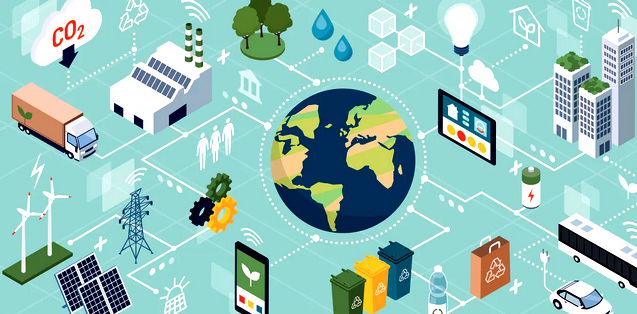Analysing cases of successful societal shift points the way.

|
|
Solar panels may be reaching a tipping point in Australia.
Credit: Sven Hagolani / Getty Images
|
A new study has highlighted examples of positive “tipping points” in human societies that could rapidly slash carbon emissions.
Timothy Lenton, director of the Global Systems Institute at the University of Exeter and Simon Sharpe, deputy director in the UK Cabinet Office COP 26 unit highlight examples that have contributed to the world’s fast low-carbon transitions in road transport and power generation.
“We focus on two sectors – light road transport and power – where tipping points have already been triggered by policy interventions at individual nation scales,” they write in their paper published in the journal Climate Policy.
They say that “small coalitions of countries” could trigger “upward-scaling tipping cascades” to achieve more.
“Limiting global warming to well below 2⁰C now requires transformational change and a dramatic acceleration of progress,” says Lenton. “Many people are questioning whether this is achievable. But hope lies in the way that tipping points can spark rapid change through complex systems.”
In Norway, policies have made electric vehicles (EVs) the same price to buy as conventional cars, leading to EVs accounting for 50% of car sales. Globally, this figure sits at 2–3%.
The authors say a global tipping point will come when EVs cost the same to manufacture as conventional cars. They suggest a small number of key locations could help drive this change, such as China, the EU and California – who together make up half the world’s car sales.
Another example the researchers highlight is the decarbonisation of the power sector in the UK. In recent years, the UK has carried this out faster than any other large country.
The combination of a carbon tax and an EU emissions scheme made gas cheaper than coal. With increasing renewable energy generation, coal was tipped into unprofitability. The researchers suggest a tipping point will occur when the capital cost of coal plants falls below that of wind and solar in all countries.
“If either of these efforts – in power or road transport – succeed, the most important effect could be to tip perceptions of the potential for international cooperation to tackle climate change,” Lenton says.
Mark Holdem from the Australian National University (ANU) says that in Australia, a similar lesson might be learned from the roll out of solar photovoltaic (PV) cells in Australia.
In 2019, the Australian PV Institute reported that installation increased in residential, commercial and large-scale solar markets and by the end of October 2020, more than 2.59 million rooftop solar power systems had been installed.
“If you push out PV at a very large scale, that pushes down the price of panels and also the price of installation. Newer, better and cheaper ways of installing the panels come in,” Holdem says.
“That also generates an alteration of the energy market and [puts pressure on] regulation to remove barriers for renewables coming into the market.”
Holdem adds the solar PV rollout has led to a reduction in electricity prices, which leads to more panels being installed, driving down prices even further.
“You get this feedback system: some panels drives more panels, which drives more panels. All of that drives down greenhouse emissions, which takes the foot off the climate change accelerator.”
Lenton and Sharpe highlight that these tipping points are by no means inevitable and that policies will be required to overcome the many barriers to transition. Holdem agrees.
“We need a consistent and forward-looking policy framework which integrates climate policy with energy, industry and science policy, as well as framing this as something Australia has to do to be part of the climate change solution. It’s actually in our interests to do really well and be doing proactively.”
Links
- Study: Upward-scaling tipping cascades to meet climate goals: plausible grounds for hope
- From cottage industry to $7bn powerhouse: How Australian solar grew 100-fold in a decade
- (AU) Preparing For A 3°C Warmer Future: The Ideological Shift And Institutional Response Australia Will Need.
- (AU) Hang On For A Wild Climate And Energy Ride In 2021
- (AU) World Awaits Action By 'Suicidal' Australia, Says Former Climate Chief
- (AU) Scott Morrison's Climate Language Has Shifted – But Actions Speak Louder Than Words
- One Step Off the Grid is taking a big step into 2021
- Biggest portable solar farm under construction for SA Water
- Nation’s capital celebrates strong year for households embracing solar power
- Media coverage of climate was hit by COVID19 but it’s time for a comeback
- Increased CO2 levels could be risk to young lungs, Australian scientists find
- Sand clogs up Australia’s only operating carbon capture project
- Australia’s carbon prices dip, but traders expect more pressure to strengthen emissions targets









